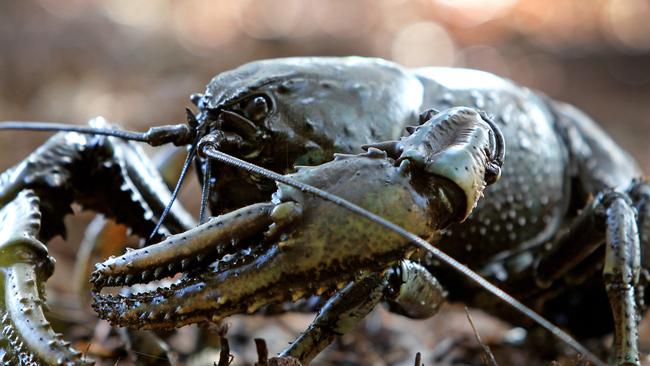Breakthrough as Tasmanian giant freshwater lobsters bred in captivity
A COMMUNITY-run refuge for Tasmania’s endangered giant freshwater lobster has recorded a significant milestone, with the discovery of more than 30 babies bred in captivity.

Tasmania
Don't miss out on the headlines from Tasmania. Followed categories will be added to My News.
A COMMUNITY-run refuge for Tasmania’s endangered giant freshwater lobster has recorded a significant milestone, with the discovery of more than 30 babies bred in captivity.
The Lobster Ponds Haven, near Wynyard in Tasmania’s North-West, hopes the new arrivals will attract even more tourists to the site, which attracts about 1650 visitors a year.
“This event may be a world first,” manager Kevin Hyland said at the site yesterday as the little lobsters swam in chilled water tanks.
“It really is very exciting and shows the years of work started by [the now late] Don Bramich, who established the premises in 2003.”
RELATED: SCIENTISTS HAIL WORLD-FIRST LOBSTER HATCHERY
The Tasmanian giant freshwater lobster is the biggest freshwater invertebrate on earth and is only found in streams and rivers in northern Tasmania.
Individuals can reach up to 1m long and can live for more than 40 years.

“School excursions and children’s groups are encouraged to visit with the realisation that the younger generation will become the custodians of the environment,” Mr Hyland said.
At the same time, many older visitors have reminisced about how they could once catch the lobsters to eat.
“Some now are regrettably realising the error of their ways,” Mr Hyland said.

The lobsters at the haven are kept in as near-natural habitat as possible.
Salmon farming giant Tassal has also come on board as a sponsor, paying for the water chillers required to keep the lobster tanks close to natural river temperature.
Another $30,000 has been accessed through the Tasmanian Community Fund for a solar-powered system to provide that chilled water and the Cradle Coast Authority’s NRM scheme has paid for interpretative signage on the site.
The Lobster Ponds Haven is run by a small volunteer group known as the Friends of the Giant Freshwater Lobster, which is a branch of Wildcare Tasmania.
The volunteers work closely with Inland Fisheries and Department of Primary Industries, Parks, Water and Environment.


